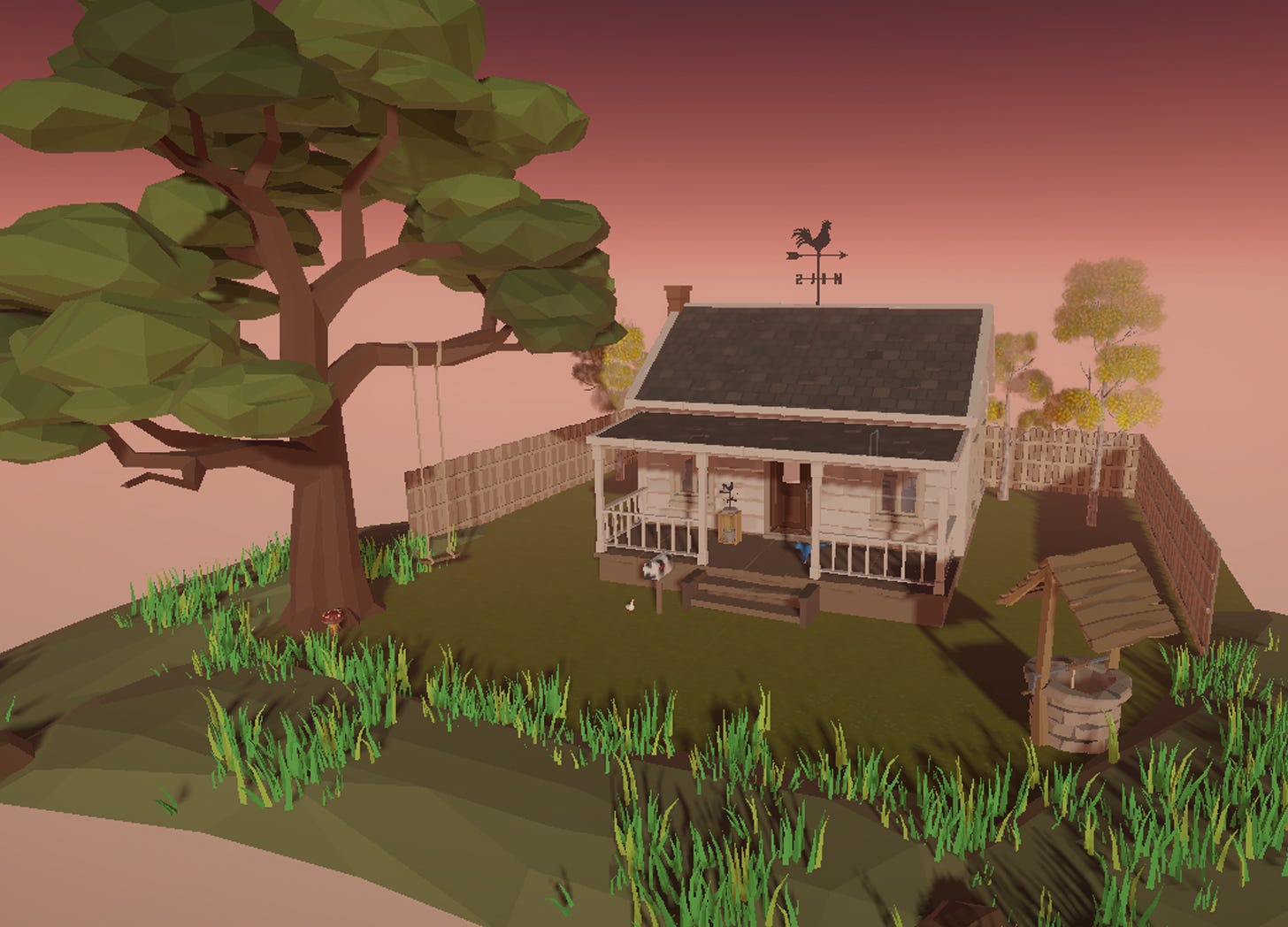It’s a misconception that I want to be in a headset all day. To me it’s like picking up a book to read a few pages or making time to watch a classic black & white film. If I’m going to be a proponent of healthy tech usage, then the pace and feeling of my work ought to reflect that too.
Then how is that achieved?
I’m reminded of a recent raccoon sighting. It stuck with me for days, affirming that the most memorable parts of life are often small. At first, I thought there was a huge bird’s nest in the tree next to my driveway. My curiosity pulled me closer to reveal a raccoon resting high up in-between thick branches. After a long day of doubt (about my art, per usual), this lifted my spirits, connected me to nature, and reinforced the comfort of home.
And it’s inspiring.
Mundane moments from everyday life can be just what’s needed to make a digital world more real and meaningful. Pulling from these experiences helps me craft how it feels to be inside the VR worlds I build, with the latest being my story app The Dream Lodge. At one of the XR companies I worked for, someone called this “moments of delight.” That might be one of my favorite descriptions of how subtle changes in environment and gameplay can elicit positive emotion.
Delighted is a good way to describe what I recently felt while working on a weather-changing interaction. Here the player turns a small replica of a weathervane, and the sky responds, matching the position of the one on the roof. Even though it wasn’t finished, I had to share it on LinkedIn, not to get praise but because it made me smile. Like I was sharing a picture of my cat.
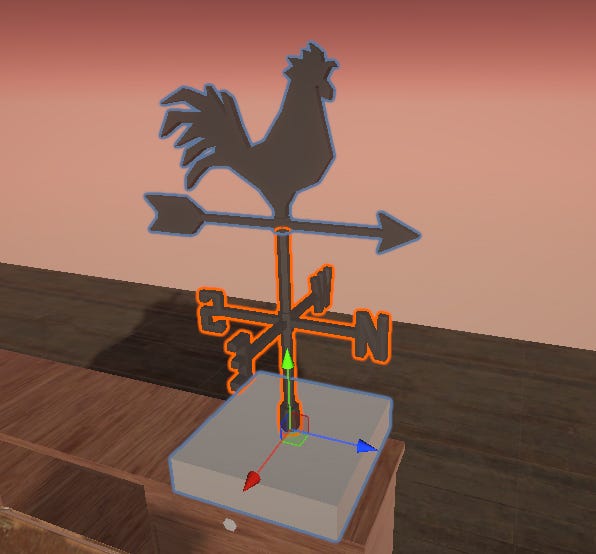
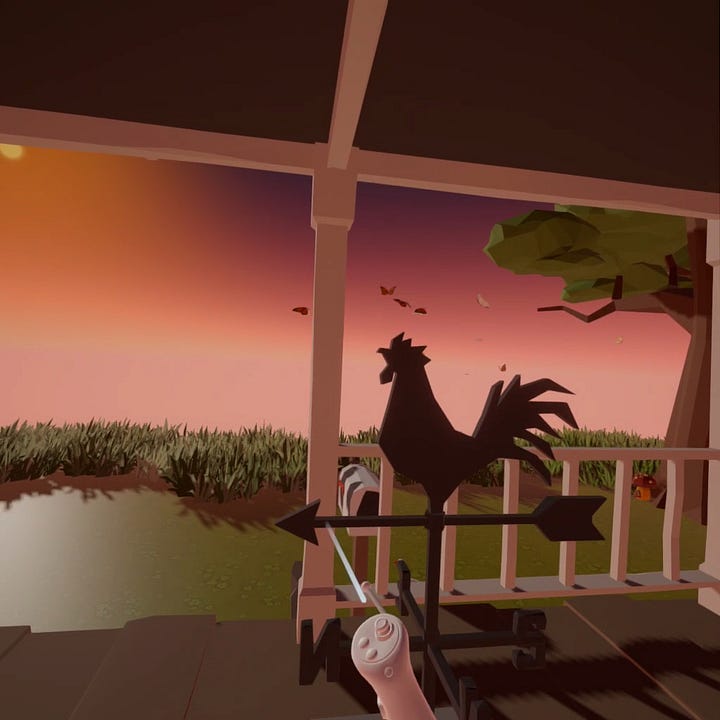
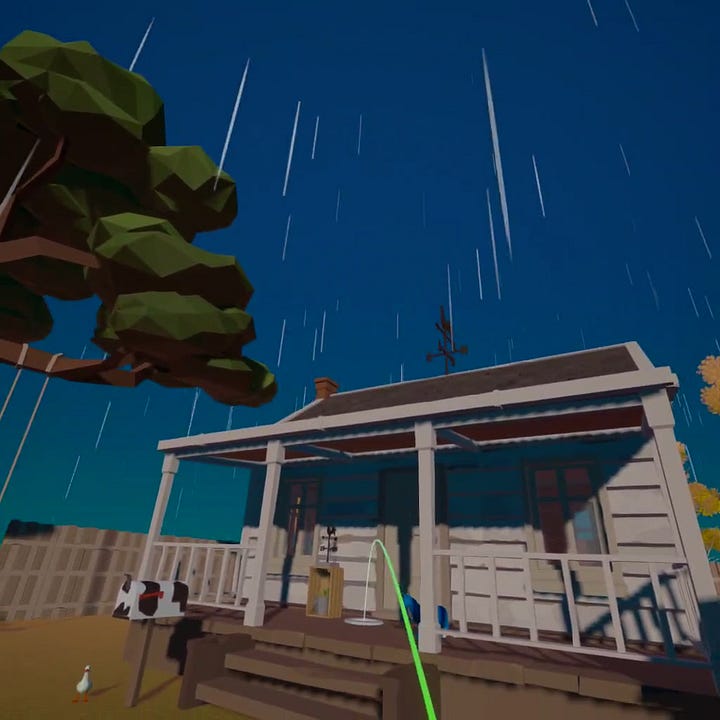
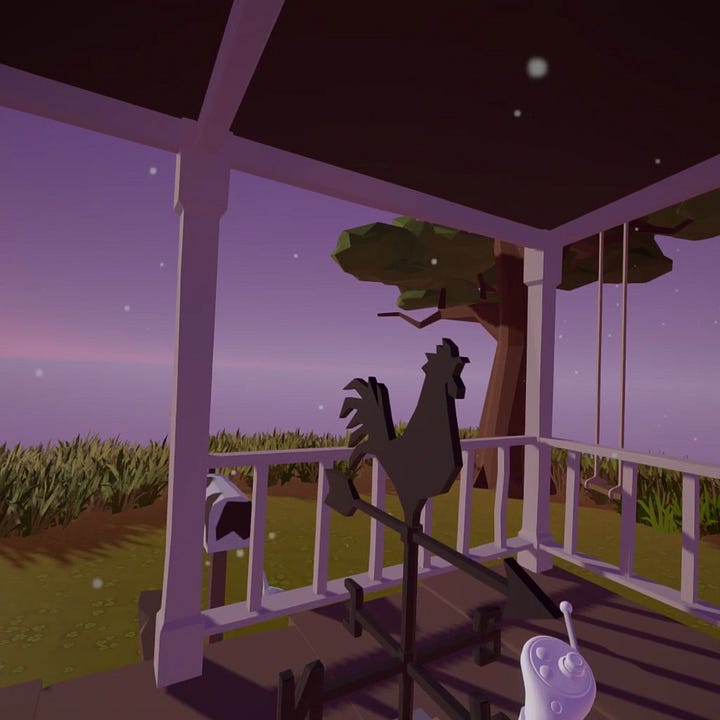
Quiet doesn’t usually get attention, so I was surprised by the response and this lovely comment,
“This is such a beautiful and thoughtful interaction — I love how it ties emotion to environment in such a subtle way. It’s these kinds of immersive, cozy moments that make VR truly magical.”
People share amazing mechanics in their XR prototypes all the time online and I love seeing such innovative ideas. More times than not this can seem like a gimmick, flashy without substance, and I want to emphasize the joy of designing for human resonance.
This is what I keep in mind when creating different interactions for the cabin scene. There are so many ideas that I plan to expand upon but I’m taking care with each one, like the book interaction. It’s fun to turn pages in a book, and I love how this gently moves the player…
slowly.
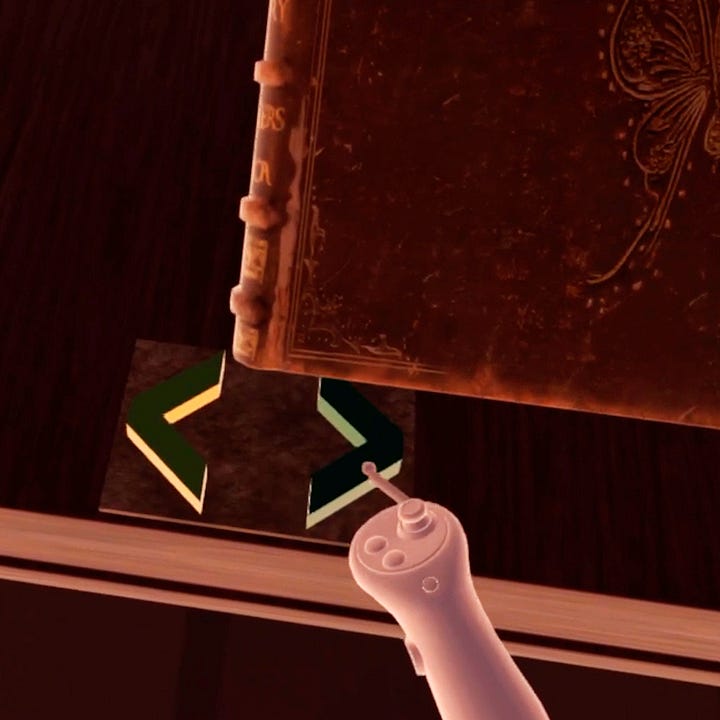
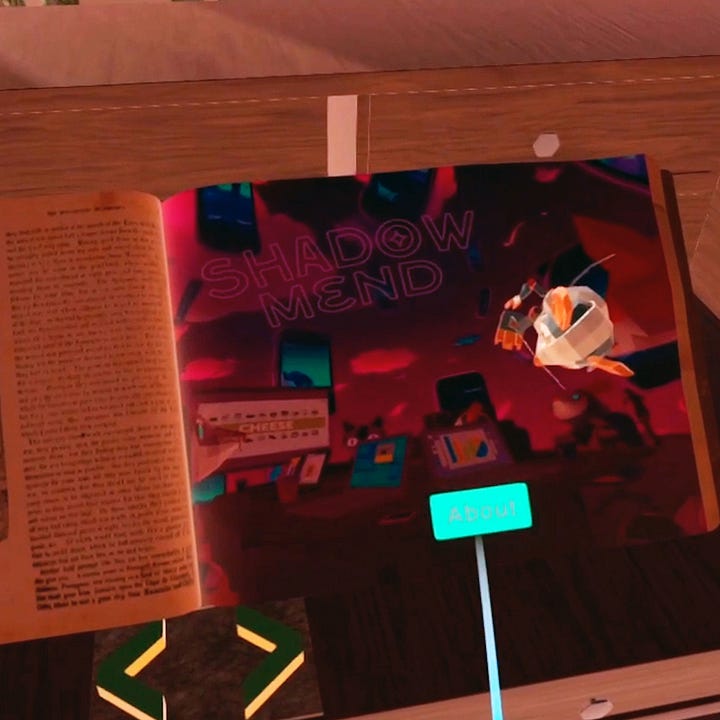
Maybe you prefer to move fast and break things?
Creating in an age of speed is hard, particularly when you are motivated and want to move with it all. For years I’ve held myself to high standards and competitive timelines. It seemed like this was the only way to succeed as an artist or otherwise be left behind. As I’ve reflected on the tension of being an artist using tech tools, I’m starting to resist the pressure (notably from AI) to rush and produce like a machine. Like a painter who steps back to observe the progress of a painting, I traipse around my VR scene to see how it feels. I’m intentionally choosing craft over speed. If I don’t then I fear my work will no longer be truly mine.
Slow art is not lazy art.
Taking your time to create great work doesn’t mean there’s a lack of drive or urgency. It’s more like gaining the awareness to know when to speed up and when to slow down. Projects often live with me 24/7, and this requires pauses to find what works and what doesn’t. Choosing stillness is not the absence of progress. It’s where depth lives. Immersive art, especially narrative VR, needs breathing room to grow. Having patience shows strong character versus forcing interactions and story arcs. Do you rush a seed to grow into a plant or a magnificent tree? Digging it out of the ground too early might cause it to die. Your work has a better chance of surviving the test of time if there are layers to discover and observe, ideas to debate, but that depth can’t take shape if you stunt growth.
VR has a way of shining a light on lovely subtleties, things like liminal spaces. And as a medium VR could be that in itself, whether literal or a state of mind. It’s like you don’t know what is, or was, there but something feels eerily familiar and possible. And I like how this can provide insight into the mundane and things we miss when moving fast and not taking time to look closely.
Ultimately what my experiences like The Dream Lodge are built on is human feeling. My usual quality check is, If I love being in this world, I think others will too. It’s like using the senses as poetry for a virtual world, making it more human. I want the cabin to feel like a breath, like noticing the sky shift while you're making a cup of tea and simply being.
As development continues, I’ll take note of these subtleties, create space to notice and allow beauty to emerge. If designing for quiet magic sounds like your kind of vibe, I’d love to have you join me at my YouTube channel too. There you’ll see all these updates in action! 💞




